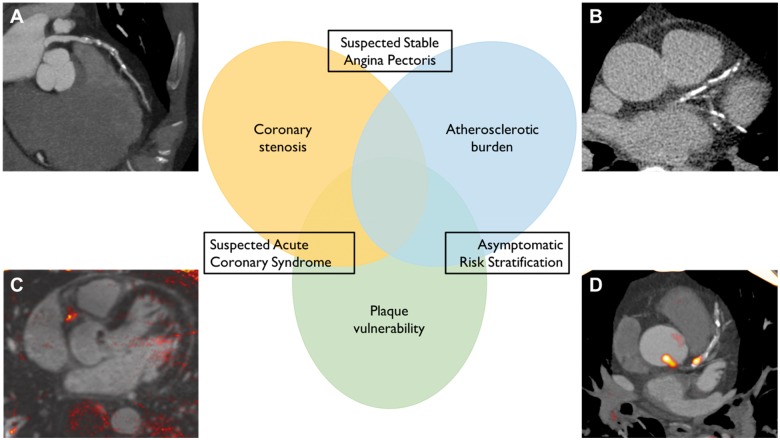Figure 2.
Complementary roles of non-invasive coronary imaging. The use of non-invasive coronary imaging can be considered in three contexts, each with specific objectives that may inform the choice of imaging modality. (A) Computed tomography angiography provides accurate assessment of coronary stenosis that can guide management of patients with suspected stable angina and rule out Type 1 myocardial infarction in patients with potential acute coronary syndrome. (B) Coronary artery calcium scanning is able to reliably quantify overall atherosclerotic burden and improve risk stratification in asymptomatic individuals. (C) T1-weighted magnetic resonance coronary angiography can identify features of atherosclerotic instability including intracoronary thrombus and intraplaque haemorrhage and may be of value in suspected acute coronary syndrome or asymptomatic risk stratification. (D) Positron emission tomography can employ specific tracers designed to target markers of plaque vulnerability that may improve prognostic assessment or act as a surrogate of therapeutic response in asymptomatic patients.

